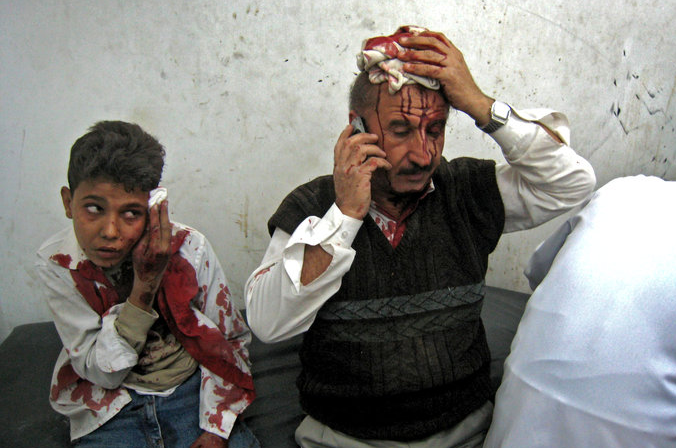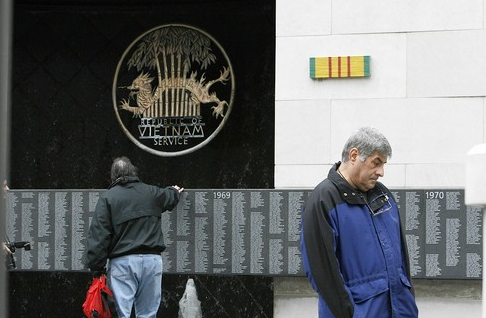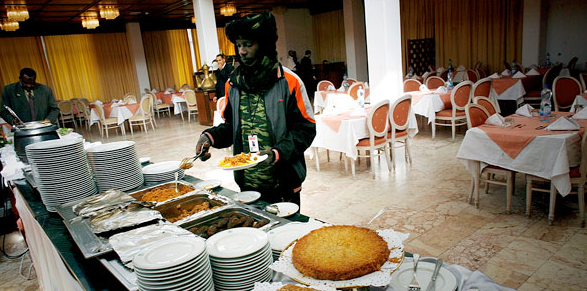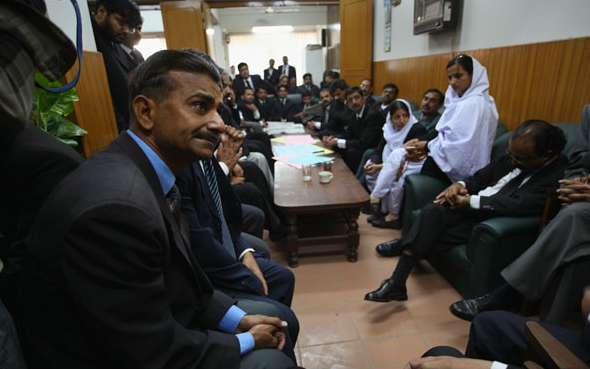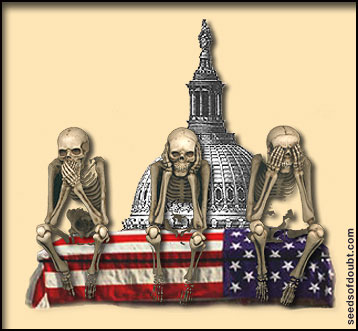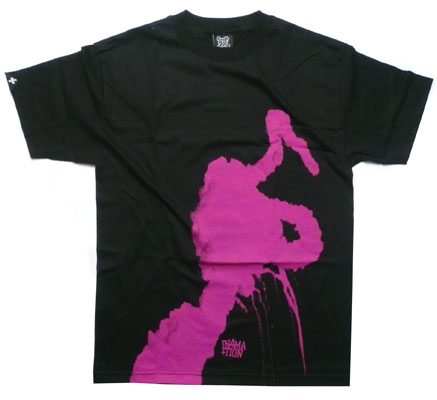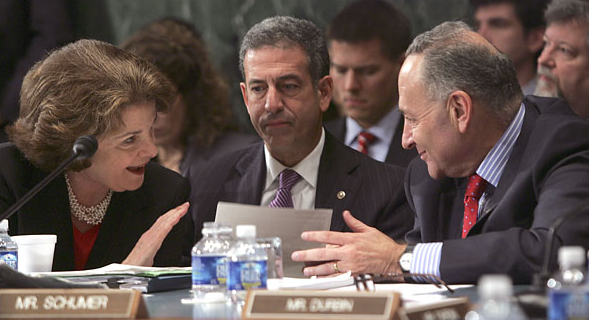Stop the presses! The NYT reported yesterday that Federal Reserve Board Chairman Bernanke, speaking before the Joint Economic Committee of the U.S. Congress, announced that the economy is “likely to slow” in the 4th quarter and well into next year! But, there is no r——— here, just a normal economic correction produced by “significant drag.”
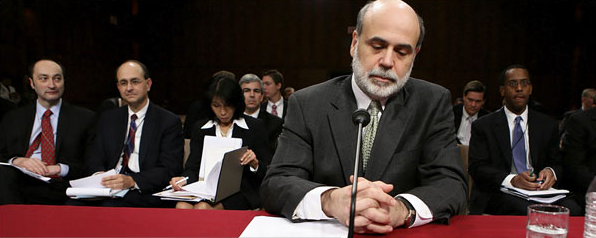
The story leads off with a photograph* that is in many respects altogether unremarkable, a stock image of an official “suit” about to testify before a congressional committee, his notes and microphone arrayed in front of him, a gallery of bureaucrats behind him. It is business as usual. Your government at work. At the same time, it is hard not to see Bernanke as poised in prayer, his fingers reverently entwined, his eyes closed in contemplation, his head tilted down in supplication. Indeed, the camera seems to record a palpable, public display of ritualistic piety.
One can only imagine his subvocal prayer: “Dear Lord, please don’t let there be a recession! If you grant me this one request I promise …” Those aren’t exactly the words he uttered in his testimony, of course, but they are emblematic of his message and they come close to capturing his incantatory logic. It reminds me of when I was eight years old and I swore to be nice to my sister if my Lord and Maker would help the Yankees win the World Series (they lost to Pittsburg 4-3 and to this day I think it was punishment for sneaking a transistor radio into school and listening to the game in the boys room—but to be fair, I wasn’t exactly nice to my sister either). My guess is that Bernanke will have no more luck than I did. But I digress.
What makes the photograph especially interesting is how the display of piety appears to contrast with a photograph published by the NYT earlier in the day as part of a separate story concerning the “pinch” being felt by homeowners as a result of the mortgage and equity crisis and its implications for the impending economic (uhm!) “slowdown.”

Here we have Marshall Whittey, a sales manager for a floor and tile company in Reno, Nevada. There is no piety here! We see Marshall sitting in his home surrounded by a few of his prized consumer possessions, most notably the media center behind him, including one of two large flat-screen televisions he recently purchased, as well as two lap dogs. We can only assume that the watch on his wrist is not some knock-off he found for twenty bucks at his local Wal Mart. Not shown, but described in the article are his 21-foot boat and his new truck, purchased simply because he “didn’t like the color” of the older one. It is the somewhat uneasy, caught-with-his-hand-in-the-cookie-jar smirk on his face that tells the story, for all of these goods – as well as his recent wedding on a “sumptuous private estate in Napa Valley” and his honeymoon in Tahiti – were paid for on a line of home-equity credit. As he put it, “It used to be that if I wanted it, I’d just go out and buy it and finance it … [but now] I’m feeling the crunch, and my spending is down significantly.” Down, but apparently not entirely out. The problem is that his house, which was once assessed at $500,000 is now worth much less than the $580,000 he owes the bank. But through it all Whittey remains “unflappable”: “We used to go out and eat three or four nights a week. Now we don’t go out at all.”
It is hard to know which is worse. The faux-piety displayed by Bernanke and his fervent wish that the economy is simply going through a normal and natural correction, or the total absence of either piety or contrition in Whittey’s smirk as it inflects his assumption that the penance for years of consumer gluttony is “eating in” more often. That might work for upper-middle class homeowners who are feeling “pinched” because they can no longer think of the equity in their houses as “piggy banks” to be raided with impunity, but it is surely little solace to those not quite so fortunate as to own their own homes (let alone half million dollar houses) during the economic “slowdown”–or ever.
What is important here are the ways in which the photographs work in concert with one another to frame a civic attitude towards the current mortage and equity crisis. It seems to me that there are two different ways we can read the conjunction of these photographs. From a realist perspective, the relationship is as as evidence to claim. As such, Whittey’s performance of impiety stands as a prime example of the problem that warrants the normal economic correction that Bernanke’s pious reverence for the laws of economics relies upon. The problem, you see, is those darned homeowners who simply can’t control their urges. From a different and more cynical perspective, the photographs function in an allegorical register, inviting us to see the somewhat malignant connection between a government bureaucracy reduced to empty ritualistic incantations and unrepentant, self-indulgent, consumer-citizens who lack any sense of responsibility to a common good that extends beyond their own private, acquisitive interests.
But here’s the rub: Whichever way you read the relationship between the two photographs, the civic attitudes they invoke reinforce the sense that the problem is not systemic but individual; indeed, it is rooted in the domestic psychology of private life, not in an economic system that relies more on consumers than citizens. Let the system run its course and all will be well. At base then, the photographs suggest, neither Bernanke nor Whittey are the “economic girlie men” that Arnold Schwarzenegger once admonished for their undue economic pessimism. Much to the contrary, each remains blindly hopeful. And more’s the pity. You can rest assured that we will all eventually pay the price.
*Between the original posting around 10:00 a.m. and when I returned to link to the story the picture disappeared from the website. Here is a screen grab of the picture in its original context.
Photo Credits: Doug Mills and Marilyn Newton/New York Times

6 Comments

